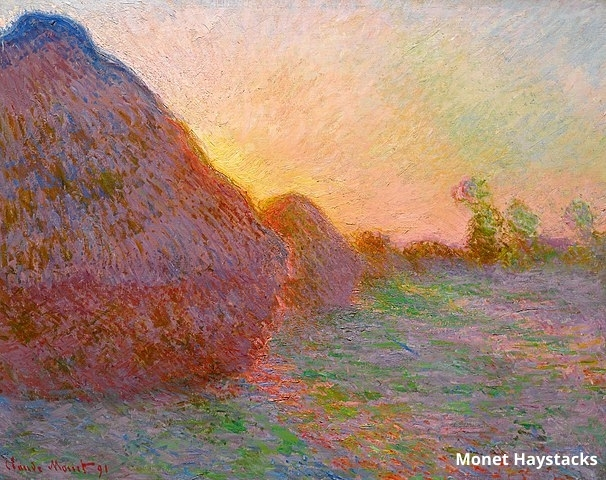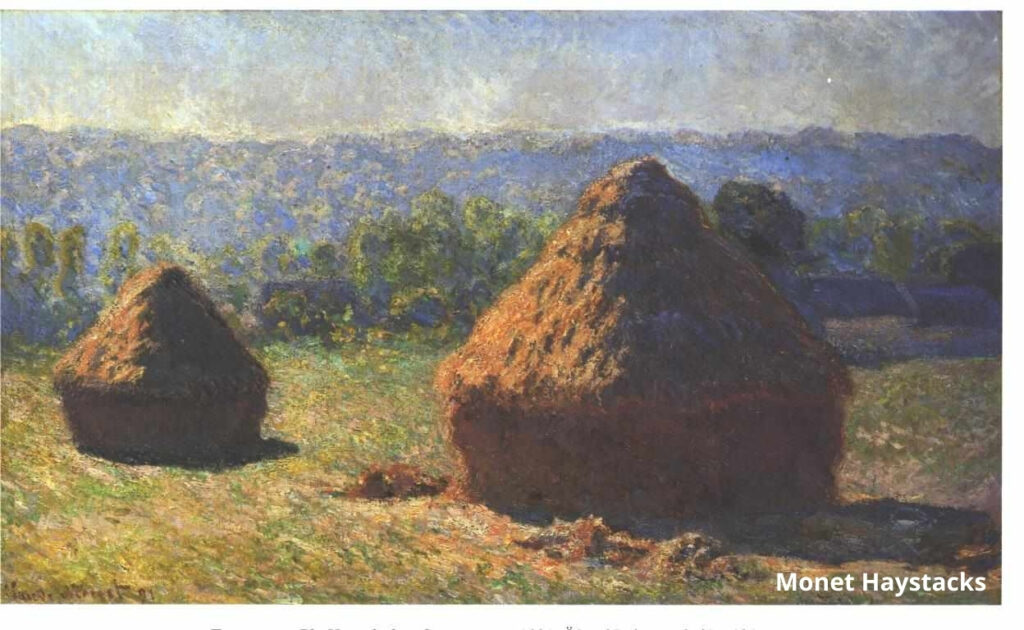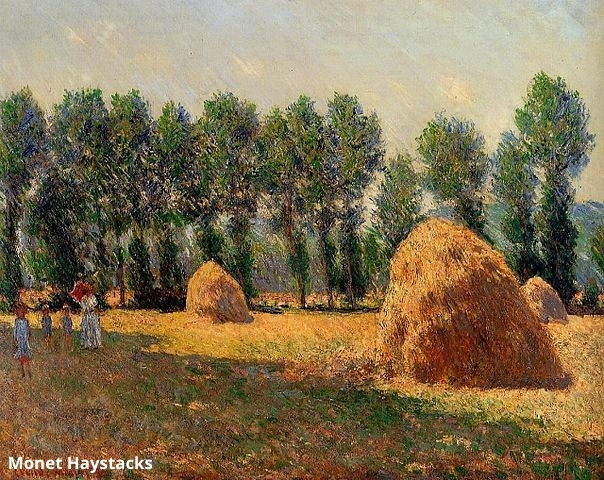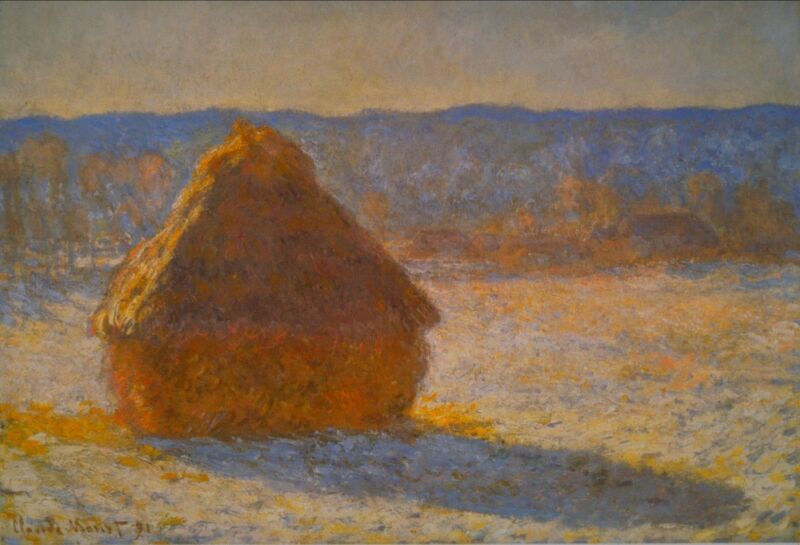The Monet Haystacks series of work is a prime example of his unwavering drive to capture light and it’s relationship to an object or scene and how that light changes both during the day and throughout the year.
Claude Monet would spend considerable time painting the same subject matter over and over again and has many series of canvases to his name.
The Water Lilies is probably the most recognized of his these collections and the largest as it spans some 250 canvases.
However, Monet’s haystacks painting are held in very high esteem within the art world as being some of his finest work albeit not as well known as the water lilies.
Some of his latter work such as The Water Lilies and Japanese Bridge and Monet Artist’s Garden did not feature a sky line or horizon and had a much narrower focus.
Whereas the haystacks painting were much larger scenes and often contained the horizon, rolling countryside and tree lines in the distance.
Monet Haystacks

As the name suggests the subject matter of the Haystacks series are stacks of hay or wheat following the harvest.
Monet had to convince a local farmer close to his home in Giverny to allow him to access the fields over a extended period of time that spanned several seasons.
He worked tirelessly for roughly 18 months between 1890 and 1891 with all of Monet’s paintings being no more than three kilometers from his house in the French countryside.
Very few of the paintings feature a single haystack with the bulk having two or three individual stacks present.
Not only where the haystacks painted at varying parts of the day to capture the differences in light but others were also painted across different seasons.
The majority were painted in late spring and through the summer.

However, Monet did complete some canvases during the winter and they feature the affect of both the lower winter sun and the snow on the ground.
The speed at which the light changes during the winter gave the artist particular trouble and many individual pieces had to be attempted on multiple occasions to capture the same light again on a different day.
A similar approach he would use on the Rouen Cathedral series of paintings
Monet was famous for his ability to work on multiple canvases all on the same day often for no more than an hour or so on each individual one.
He would routinely have his assistant bring many different works that had been started previously from his studio back out into the fields so that he could choose one to work on providing that the current lighting conditions were similar to when it was started.
The reason behind this was that light and color changed dramatically throughout the day especially when dealing with an object such as a haystack that casts a considerable shadow in the foreground.

The Haystacks series have some of the most vibrant sun sets that Monet ever painted.
In recent years some of the series have fetched record prices at auction with and was sold by Sotheby’s for $110.7 million making it one of the most expensive impressionist paintings ever sold.
The bulk of the 25 pieces in Monet’s Haystacks series now reside in public galleries rather than private collections.

